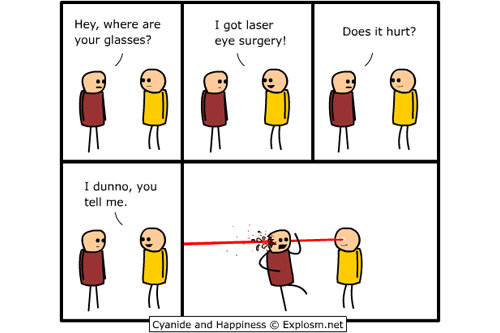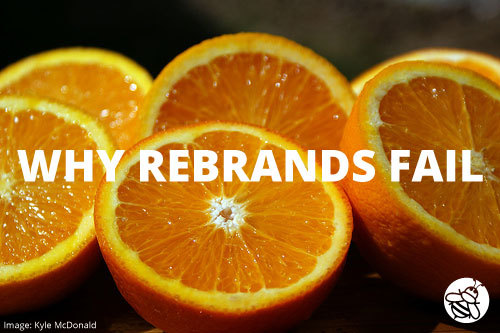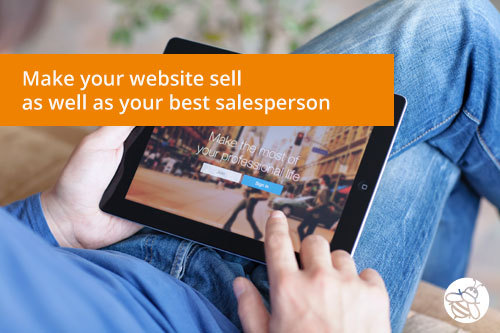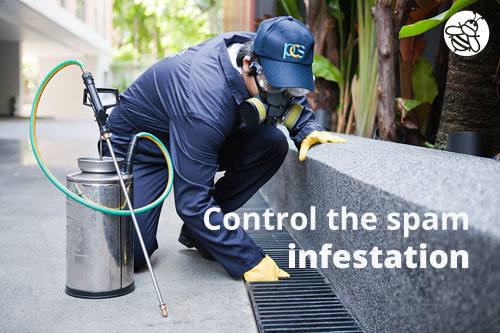Jeremy Miller's Blog, page 35
July 28, 2015
Be Right Back
I’ve been waiting to share this cartoon with you for a long time. 
On Thursday I had laser eye surgery performed on both eyes. I’ve been wearing glasses since I was 14 years old. Most of the time glasses aren’t a big deal, but they become a real pain in the butt when I’m mountain biking and snowboarding.
After lots of thought and deliberation I pulled the trigger to free myself of spectacles.
The surgery went well, but the recovery is taking longer than expected. Everyone I know who went through the procedure had a speedy recovery, but I am in that fraction of a percent who is experiencing complications.
I have swelling in the cornea of my left eye (corneal edema), which is affecting my sight. It’s making everything blurry, especially when working at my computer. (I am doing most of my typing by looking away from the monitor.)
My doctor has advised me to avoid using screens as much as possible for two weeks. I am taking a week off from writing. I am hoping to get back to sharing ideas with you next week (knock on wood). I’ll keep you updated if there are any more delays.
Thanks!
Jeremy
July 23, 2015
Why Rebrands Fail
Rebranding is a big decision. It’s like hitting the reset button for your company. And a mismanaged rebrand can have disastrous consequences.
After the financial meltdown of 2008 ING was forced to restructure its North American businesses. ING Direct, the Canadian arm, was sold to Scotiabank and rebranded to Tangerine. ING U.S. went through an IPO, and rebranded to VOYA.
ING Direct had an iconic brand, especially in Canada. Consumers identified with the bank’s slogan, “Save Your Money!” The brand was well positioned and had a high degree of awareness.
Today, it’s hard to say. What does Tangerine mean to you? Do you think of “online banking?” Does the new slogan “Forward Banking” resonate like “Save Your Money!”?
Short Term Gains Are Inevitable
According to the Cassies, an advertising award, the initial rebrand of ING Direct to Tangerine has been successful:
There was a 91% increase in new customer applications in the eight weeks following the April brand launch compared to the period eight weeks prior while the rate of client attrition decreased by 25% in the two months following the transition. Unaided brand awareness for Tangerine reached 15% on June 1, 2014, more than double the target and three percentage points higher than awareness of ING Direct. Awareness of the name change exceeded 70% among 25- to 34-year-olds.
These are definitely impressive results, but they’re also to be expected. Rebrands inevitably create a short term lift for a company.
The launch of the new brand is an exciting moment. It gives the sales and marketing teams a reason to re-engage the entire customer base. The PR team have exciting stories to share with the media. And the leadership is happy to spend money on advertising and promotion to get the new name out into the market.
A rebrand gives you a reason to beat your drum for six to nine months, but there’s only so many times you can say, “Look at our new name. We’ve got even better services.”
What Happens in Year Two?
The success or failure of a rebrand is assessed in year two and beyond.
After the initial buzz has worn off how do your customers respond to the new brand? This is where the rubber hits the road. A rebrand isn’t about creating initial buzz, it’s about creating lasting value.
Rebrands fail because organizations don’t recognize how much effort it takes to seed a new brand.
All the history and value is baked in the old brand. How are you going to pull those positive experiences and feelings to the new brand? How many times do you have to introduce the new brand before it sticks in customers’ minds? What happens if customers don’t identify with the new name and value proposition?
A successful rebrand has a long term strategy. It’s not a project. It’s a process that can take three years to come to fruition.
Brands Grow With Time
The ING rebrands to Tangerine and VOYA are both in the early stages. It’s too early to judge if they’re a success or failure yet.
I am paying close attention to Tangerine. It’s in my local market, and I am curious to see if it can reclaim the lofty positioning and reputation of ING Direct. Ultimately consumers will decide.
Rebranding your business comes with risks — big risks! The key to making a rebrand successful is to look far enough in the future to create a brand that can stand the test of time.
July 21, 2015
3 Pitfalls of Managing Multiple Brands
For a small business to manage multiple brands is an expensive and often unrealistic proposition.
Ok, let me back up for a moment. I am starting at the end.
I am often called to advise rapidly growing small businesses on their brand strategies. The organizations are being pushed in many new and exciting directions: new markets, new customers, new products and services.
This is a natural course of business. Success leads to more success, and can open up exciting new opportunities. But this can also lead to a branding challenge.
Do you stretch the brand with a brand extension, or do you split it to create a new brand?
The quick response might be to launch a new brand. If the product, service, or target market is distinct enough it could warrant having it’s own brand. But hold on a minute. Splintering the business into distinct brands may sound good on paper, but it’s fraught with three significant pitfalls.
1. Duplicate Sales and Marketing Costs
The most obvious reason not to create a new brand is the increased infrastructure costs.
A house of brands — a company that manages multiple stand-alone brands — has a lot of marketing overhead. Each brand requires a distinct marketing platform: website, marketing collateral, name, promotion, resources, and so on.
David Aaker writes in Brand Leadership, “Procter & Gamble is a house of brands that operates over 80 major brands with little connection to P&G or to each other. In doing so, P&G sacrifices the economies of scale and synergies that come with leveraging a brand across multiple businesses.”
Aaker continues, “The P&G house of brands strategy, however, allows the firm to clearly position the brands on their functional benefits and to dominate niche segments.”
That’s the rub. Small businesses are not P&G, and don’t have the supporting infrastructure and budgets to support the complexity of a house of brands strategy.
2. Limited Customer Reach
The other pitfall of a house of brands, especially for small businesses, is reach.
Every time you fracture the brand you have to work that much harder to connect and communicate with your audience. A portfolio of products and services under one website will reach far more people than a series of smaller product-focused websites.
Small businesses have to do more with less. What’s your organization’s annual marketing budget compared to your largest competitors? The bigger the gap, the more deliberate you have to be with your marketing activities.
What’s the most effective way for your organization to reach the largest audience possible?
3. Unity Creates Credibility
A focused product brand may serve a clear market, but it can also look like a startup.
A rapidly growing organization with a suite of services has an air of credibility to it. People can see the firm’s success in other categories and how it’s serving customers and markets. This creates a halo effect.
Customers want to know they are buying from an established, trustworthy business. When you split the company into distinct brands you lose the halo effect. Each product has to stand on its own merit, and does nothing to help it’s siblings.
Build a Strong Corporate Brand
A house of brands is a viable brand architecture, but the risks often outweigh the benefits for small businesses.
The more effective approach is to build a strong corporate brand. Think Apple.
What did the iPod have to do with personal computers? Not much. The iPod could have stood on its own when launched, but it was so much stronger as part of the Apple brand.
Apple’s corporate brand endorses its products and services. That relationship is a mark of trust.
Build a strong corporate brand for your business, one that your customers identify with and gravitate towards. That will give you a lot more flexibility in your product portfolio.
July 16, 2015
2015 Reader Survey: Help Me Create Content That Serves Your Needs
To do great work requires feedback and direction.
I want to ensure my content is doing the best possible job of answering your needs and interests. That’s why I need your input.
Would you take a few minutes to share your thoughts in my 2015 Reader Survey?
The trigger event for the survey is a re-evaluation of my blog and approach to content:
What’s the optimal frequency for publishing articles?
What topics would you like me to explore or delve deeper into?
What do you like and what can be improved?
Rather than navel gazing and guessing what you want, I’d rather ask. Would you please take a few minutes to fill out the survey? This will help both of us, because you are helping me create even more interesting and relevant content for you.
Your input is important to me. The survey is easy to fill out, it’s completely anonymous, and you can finish it in less than five minutes.
“I’m Happy to Help. Take Me to the Survey!”
I will share the results of the survey in the next few weeks, and I’ll starting acting on your input right away.
Thanks in advance!
July 14, 2015
The Art of Polarizing Your Brand
Gene Simmons said, “People either love KISS or hate us with all of their guts, and that’s the way we like it.”
This is a bold statement. It’s polarizing, and there is a real gem of truth in it.
Indifference is the worst place for a brand. Love and hate are visceral emotions. They take energy. They take commitment. They take knowledge.
Indifference, on the other hand, is purgatory. Your brand may exist, but no one cares.
If you have to choose, it’s better to be hated than to be stuck in the indifference trap. Take the steps to make your brand polarizing.
What Are You Fighting Against?
To polarize your brand choose an enemy. It’s hard to ignore your brand if your team is passionately fighting to change its industry.
What is your brand fighting against?
Uber is fighting against the status quo — local limo and taxi companies. It’s giving customers a new way to get around, and people are taking notice. Actually, that’s an understatement.
Even if you have never used the service, you’ve probably heard of Uber. The company has a buzz about them that is dramatically greater than its size or advertising budget.
For example, prior to the Pan Am Games in Toronto cabbies threatened to “shut down the city” if police and Mayor John Tory didn’t crack down on the ride-sharing company. The status quo is under serious threat of being displaced by Uber, and they’re fighting back.
This is the power of Uber’s brand. It polarizes customers, competitors, and politicians. People either love the service and call it “the future,” or they hate it and fight it with all they’ve got. There really isn’t much middle ground, and that’s a powerful position.
There Are Right and Wrong Customers
Indifference is a symptom of lack of focus. Trying to serve everyone is a surefire way of being bland and forgotten.
Harry Rosen, Canada’s largest premium menswear retailer, is not for everyone. Its clothing is modern, fashionable, and designed for youthful professionals. This isn’t where you go to buy a $500 suit or rent a tuxedo.
Harry Rosen has a well defined niche. It serves high income males between 20 to 50, what they call MOPEs — Managers, Owners, Professionals, Entrepreneurs. It doesn’t try to serve all men. Harry Rosen knows who it serves, and it does that exceptionally well.
Can you clearly define your customers? Who does your business serve, and who doesn’t it serve?
Stand Out With Purpose
There are lots of brands that are polarizing. Some are controversial like Fox News or Uber. Others are more subtle, but equally effective, like Apple or Harry Rosen.
These brands know who they serve. They know how to energize their customer base. And they know how to stand out amongst their peers.
This is the art of polarizing your brand.
You’re not trying to be an asshole and get attention for attention’s sake. Your standing out to better serve your customers. You know what they need, and you’re fighting to serve them even better.
When you focus on a clear customer base and fight for them your brand will avoid the indifference trap. Not everyone will like it, but that’s just the response you’re looking for.
July 9, 2015
Put Your Best Foot Forward
The first impression your brand makes is important. It shapes expectations of what’s to come.
This is as true for people as it is for companies. If you are interviewing for a job, the way you look and present yourself will dictate whether you get the job. Like it or not, the interviewer has subconsciously formed their opinion of the job seeker between the lobby and the interview room. The first two minutes defines the outcome.
To combat this phenomena job seekers are coached to dress up for interviews. Always dress as well or slightly better than the audience.
The same advice is appropriate for companies. How your company looks, especially online, will influence your customers. A tired, disorganized website tells a story, and it’s not positive.
Put your best foot forward when you’re building your brand. Dress up!
Customers Judge With Their Eyes
In the digital realm you are catering to your customers’ eyes. They are forming an opinion on your company’s credibility and capabilities based on how your company looks. Take care to delight their eyes.
Every touch point your customers have with your company is an opportunity to present your brand and engage their eyes. But for the sake of simplicity let’s focus on your website.
A website engages the eye in a few distinct areas:
1. Menu and Navigation
Think of your menu as your suit and tie. It’s what the user expects to see.
There’s nothing more frustrating than visiting a website and not knowing where to go. A good menu is like a suit, it follows a predictable structure.
When you visit a website you look to the top menu first. “About,” “Services,” and “Contact” prominently featured at the top of the page — where they belong.
Make the navigation of your website simple. The less options the better. Every page should have a logical outcome or next step. First time visitors to your website are not there to explore. They’re there to figure out what your company is, what it does, and how it can help. If you lose them in the process, they’re going to leave.
2. Content
In an interview you are selling yourself. You’re helping the interviewer quickly categorize who you are, what expertise you have to offer, and why you’ll make a great addition to the team.
You can put all this information on your resume, but what really counts is how you tell the story. Is it clear? Are there examples? Do you speak with authority? Are you credible?
You’re doing the same thing with your brand online. You’re telling your story through your content and how you present information — page layout, fonts, use of white space, and imagery.
The structure of your content leads people to form an opinion of your business. If it’s all over the map or information overload, that sends a very powerful signal: insecurity.
Tell your story. Use pictures and videos. Do whatever it takes to make it as plain as day what your company does and how you can help.
3. Personality
When I ran a recruiting agency our recruiters were mandated to conduct fifteen face-to-face interviews per week. We believed the best way to represent our candidates was to know them, which meant meeting them.
The challenge was after a while faces and people started to blend into each other. And worse still, it was easy to forget people that didn’t distinguish themselves from their peers.
The people that stood out demonstrated their personality. They were memorable. They caught your attention and they held it. And these were the people that were referred for the most jobs.
Your website is similar. If it looks like the competition it’s easy to forget.
Make your brand visibly different. Make it catch your customers’ attention, draw them in, and want more. That’s the power of a great visual brand. It makes your brand more appealing and memorable.
Give Your Customer a Reason to Stay
A great outfit doesn’t make the employee, and a great visual identity doesn’t make the brand. There’s got to be substance beyond the first impression.
Your visual identity is a reflection of what it’s like to work with you. It’s a signal of your brand’s personality, your approach to clients, and what customers can expect from you.
Put your best foot forward. Set the customer relationship off on the right foot. It makes everything so much easier later on.
July 7, 2015
Make Your Website Sell As Well As Your Best Salesperson
There is no substitute for great sales talent. Hiring weak sales reps is like driving a car on bald tires. They can get you from point A to B, but you can never gain traction.
The same can be said of your website. You can have an attractive, functional website, but does it sell? If not, this is your opportunity. Make your website sell as well as your best salesperson.
Sell Like You’re In Person
Your sales process is a key indicator of what information to place on your website:
What stories and case studies do you share when you’re with a customer?
What questions do you ask to qualify if the customer is a fit for your services?
How do you educate your customers?
What information do you present, and at what stages of the buying cycle?
How do you present pricing?
What you talk about in a sales call is what goes on your website. Give your customers the information they need to buy.
One of my favorite examples of a website that sells is the Nest Cam website, formerly Dropcam. The site has a very deliberate structure: what the product is and what it does; common reasons customers use it; how it works; exciting features; and next steps (buy now).
Nest gives a product presentation in a straightforward, linear fashion. They give the customer time to digest and explore, but they also guide you to their desired outcomes: ask more questions or buy.
Drive For Next Steps
Nest Cam drives towards “Buy Now” on its website, because it’s a consumer product. B2B companies don’t (or can’t) use the same blunt call to action.
Sales people understand the logical next steps in their sales process.
For example, when I sold CRM software in the early 2000s the first objective was to deliver a product demonstration. This was the qualifying step: is the customer ready for a demo, yes or no? If yes, I had a prospect. If no, I’d answer their questions and put them back into our drip marketing programs.
Software companies will often lead with “Request Demo” as the primary call to action on their website. This is the logical next step in the buying cycle. Pressly does a good job of this. “Request Demo” is in the top menu, and “See It In Action” is embedded in the main pages. There’s no mistaking where Pressly is leading its customers.
What are the logical next steps on your website? How is your website driving customers to the next stage of your sales cycle?
Avoid Talking Yourself Out of the Sale
Brevity and simplicity is at the heart of great selling.
One of the key differences between a rookie and a senior sales rep is their ability to give the customer just the right amount of information. A common mistake rookies make is giving too much too soon, and running the risk of overwhelming the customer.
Sales managers describe giving too much as “talking yourself out of the deal.” Websites are guilty of this too. Companies have so much to say and so many scenarios to cater to online, and as a result they add page-after-page-after-page of content.
Websites that sell are minimalist. They don’t overwhelm their customers with tons of options and information. They get to the facts: About, Services, Products and Features, Pricing, Contact.
B2B sites are guilty of talking themselves out of a deal. With menus upon menus and no clear roadmap for customers to logically navigate the website. This is an issue to solve up front.
What If You Fired Your Salespeople?
I have been looking to app websites lately for inspiration — sites like Pressly, Nest Cam, and Co.Schedule. These websites are the salespeople. The app sites are mastering the art of making their websites sell as well as a salesperson.
The challenge I pose to you, how can you present your products and services with similar clarity?
How would you present your services if you fired your sales team — if your website had to do it all? How would that influence your design, layout, and content? And as a bigger question, how would it change your investment in digital marketing?
Now add the salespeople back into the equation. Imagine if your website was pulling its weight and selling as well as your best salesperson. How much would that improve your organization’s sales performance and the effectiveness of your sales team?
When you treat your website as a member of the sales team you will hold it to a much higher standard.
July 2, 2015
Three Questions to Transform Your Business
Your ability to adapt and transform your business may be your greatest competitive strength.
A few weeks ago Jon Stewart interviewed General Stanley McChrystal on The Daily Show. During the interview General McChrystal made a profound statement,
“The future, when you look forward, is complex. Therefore, it is fundamentally impossible to predict. …
You’re not going to come up with a hundred year plan, a fifty year, or even a five year plan. You’re going to come up with general directions and frameworks, and you better learn everyday. Because that’s the world we’re in now.”
His statement hit me like a ton of bricks. If the US military with all its resources and might cannot predict five years into the future, how can we hope to as businesses?
But as General McChrystal says, “That’s the world we’re in now.” He goes on to say, “What we really got to do is approach things with an awful lot of humility that says, what we’re going to do is approach things with the reality that we’re going to have to adapt constantly and iterate.”
Change is not a choice. Change is our reality.
Create a Culture of Change
Creating a culture of change was a common theme amongst the companies I profiled for my book. Again and again I heard stories of transformation.
Icebreaker, a manufacturer and retailer of merino wool outdoor clothing, has even gone so far as codifying their culture of change. They call it “shedding our skin.”
Jeremy Moon, founder of Icebreaker, says, “I’ve never defended the status quo. I feel anxious if we are not in a constant process of reinvention.”
A constant process of reinvention can be very disconcerting. As human beings we seek structure and routine, and we are naturally resistant to change. But we have to fight this natural tendency.
Companies that grow Sticky Brands not only embrace change, they relish it.
Three Questions to Drive Change
To shed the skin Icebreaker does a deep dive into their operations every three years and asks three very deliberate questions:
Where are we today, and where do we need to move towards?
What’s working, and what isn’t working?
Who here is part of the team moving forward, and who has stopped growing and cannot keep up?
These are amazing questions. If you delve into them and really let them challenge your assumptions you can come up with some incredible insights — insights to lead change in your organization.
Efficiency Runs Counter to Change
One of the most counterintuitive lessons I took from General McChrystal is being too efficient can actually hold your company back.
“Organizations that get very happy with being efficient … now don’t work. And it’s disorienting people,” says General McChrystal. “The reality is because you can’t predict the future, I think we’re going to have to work on being adaptable and gear ourselves and our organizations that way.”
I often sum up this sentiment with the phrase, “What made you successful won’t make you successful.”
Holding onto past systems and strategies is not an answer. It may create a feeling of short term security, but that should be a warning sign that trouble is close by.
It’s the organizations that embrace change and adapt rapidly that are growing Sticky Brands.
June 30, 2015
Cut The Fat From Your Selling
It’s time to challenge convention:
Do customers require a face-to-face meeting to make a purchase decision?
Should customers have to call in or meet a sales rep to get pricing?
Do customers really need to receive a proposal?
Companies do a lot of things in sales out of tradition. In the pre-internet days companies relied on large outside sales forces, because they were the most efficient way to connect and communicate with customers. Today, the internet has replaced most of what outside reps do.
Strangely, companies are still relying on outside sales reps versus questioning how their customers really want to buy. This is shaped by preconceived expectations: outside sales reps are better than inside sales; this is the way we’ve always sold; face-to-face interactions are better.
This is the fat, and corporate sales teams are filled with it. It’s time to challenge convention to deliver better sales results. To dramatically speed up sales you’ve got to cut the fat from your sales process.
Free Workshop: Learn how to dramatically improve sales performance with your brand. I am co-hosting a free workshop July 22nd from 8am to 10am. Sign-up.
Reduce the Time to Buy
In 2007 I saw David Berman, then President of WebEx, speak at the Sales 2.0 conference. In his presentation David demonstrated how WebEx had compressed their sales cycle from 90 days to 21 days. His message for the audience was to strip away everything that causes a delay in the sales cycle.
David said the biggest problem with an outside sales force is they create delays with scheduling. Every time you book a face-to-face meeting you’re adding time to the sales process.
Think about it. The customer calls in for pricing information, and instead of giving a quote and driving to a logical next step the sales rep asks for a meeting. The meeting is scheduled a few days later, and the buying process is needlessly slowed down.
These are the decisions that fatten your sales process. A face-to-face meeting may be a better experience, but is it really what the customer needs to make a purchase decision?
Measure Velocity
Velocity is a measure of how quickly it takes to close a sale.
Velocity is a relatively easy metric to capture. Track the time it takes a customer to move through each phase of your sales funnel from inquiry to close. You can start with some simple metrics:
How long does it take for your organization to respond to a website lead? (Anything over twenty-four hours is too long.)
How long does it take for a customer to receive pricing?
How long does it take to move a customer from inquiry to close?
Once you have time measurements you can start looking for the fat. What can you cut to make it easier for your customers to buy?
My holy grail for a brand is the Two Call Close. This is the ability to sell big deals ($10,000 to $75,000) in two calls over two weeks. This is fast efficient selling, and requires stripping away all the extraneous steps in the sales process.
Make It Simple, Really Simple
Again and again organizations complicate things. It may be “best practice” to have face-to-face meetings or write long winded proposals, but is that what the customer really wants?
Put yourself in your customers’ shoes. What do they want? When do they want it? How can you make buying your services super easy and simple?
These are big complex questions, and what works for one organization may not work for yours. But if you get obsessive in making buying your services simple and easy you’ll find there’s plenty of fat in your sales process — fat you’ll be glad to cut.
I will be delving deeper into this topic at the Sticky Branding Workshop. I am co-hosting a free workshop with Darren Rabie on July 22, 2015 from 8am to 10am. Register here. Tickets are going quickly.
June 25, 2015
Spam Bots Are Ruining Google Analytics
The internet is suffering from an infestation: Google Analytics Spam Bots.
These things are quickly becoming the bane of my existence. They’re like cockroaches. As soon as you get rid of one another pops up.
If you haven’t discovered spam bots infesting your website yet just pop open Google Analytics and look at the Referrals report. It’s in the left menu under Acquisition | All Traffic | Referrals. You will notice there are lots of referral traffic from sites like:
semalt.com
buttons-for-website.com
see-your-website-here.com
darodar.com
econom.co
ilovevitaly.co
If you visit any of these domains you will discover they redirect you to some pretty dodgy remarketing sites.
I first started noticing these sites in my Google Analytics reports a year ago. At first I didn’t take much notice of them. They were a bit of a nuisance, but it was only a few hundred hits per month and I could work around them.
Over the last few months it has gone from annoying to bad — real bad. For example, on April 20th I received 1,800 visitors from 4webmasters.org. That’s just one day and one bot.
At first I thought I was a hero. When I clicked into Google Analytics I saw that my monthly visitors to my site were way up. I thought I was the man, and I was drawing in a wave of new readers to my site. But then I noticed my bounce rate had spiked upwards and the average time on site was down.
That’s the problem with these Google Analytics Spam Bots. If left unchecked they create two very big issues:
Garbage in, garbage out. The spam bots ruin your digital marketing data. They skew the numbers, and make it very challenging to be strategic with your digital marketing.
They are expensive. These random, unwanted visitors to your website are costing you money. It may not be obvious at first, but they are chewing up bandwidth, slowing down your web servers, and using up resources.
Call The Exterminator!
I don’t usually write about techie stuff, but this is an issue you need to get on top of quickly — if you haven’t already.
Controlling the Google Analytics Spam Bots is a two step process:
Block them from accessing your website
Filter them out of Google Analytics
Ok, if you just went “Omm, nope. That’s way too much nerd for me. Who can I call to fix this?” Talk to Opal Gamble at Design and Develop. She’s my web developer and helped me clean up the mess on StickyBranding.com.
The DIY Approach
You can also address the problem yourself. My recommendation, do a quick search on Google. You will find tons of resources to fix the spam bot issue on your website. Here are two resources I found helpful:
How to Stop Spam Bots from Ruining Your Analytics Referral Data
Definitive Guide to Removing Referral Spam
The second post is dense, but very good. Both articles provide directions for creating filters in Google Analytics, and how to block the bots from reaching your site.
If you’re using WordPress you can also install a plugin to block the referral traffic. I am currently using the “All In One WordPress Security and Firewall Plugin”. As I find new bots in Google Analytics I add a filter to Google Analytics and update the plugin to block the spam bot from my site.
Stay Vigilant
I don’t think you can overcome the Google Analytics Spam Bot infestation on your own. You can only stay vigilant.
This spam problem is universal and escalating quickly. Realistically the fix will come from a combination of Google changing its algorithm to remove the bots from its reports, and hosting providers installing server side spam bot controls.
Regardless, the fix isn’t here yet. Google Analytics Spam Bots are a pain in the ass, but you’ve got to take control of this problem or it will overwhelm your data and it might even hurt your website.













